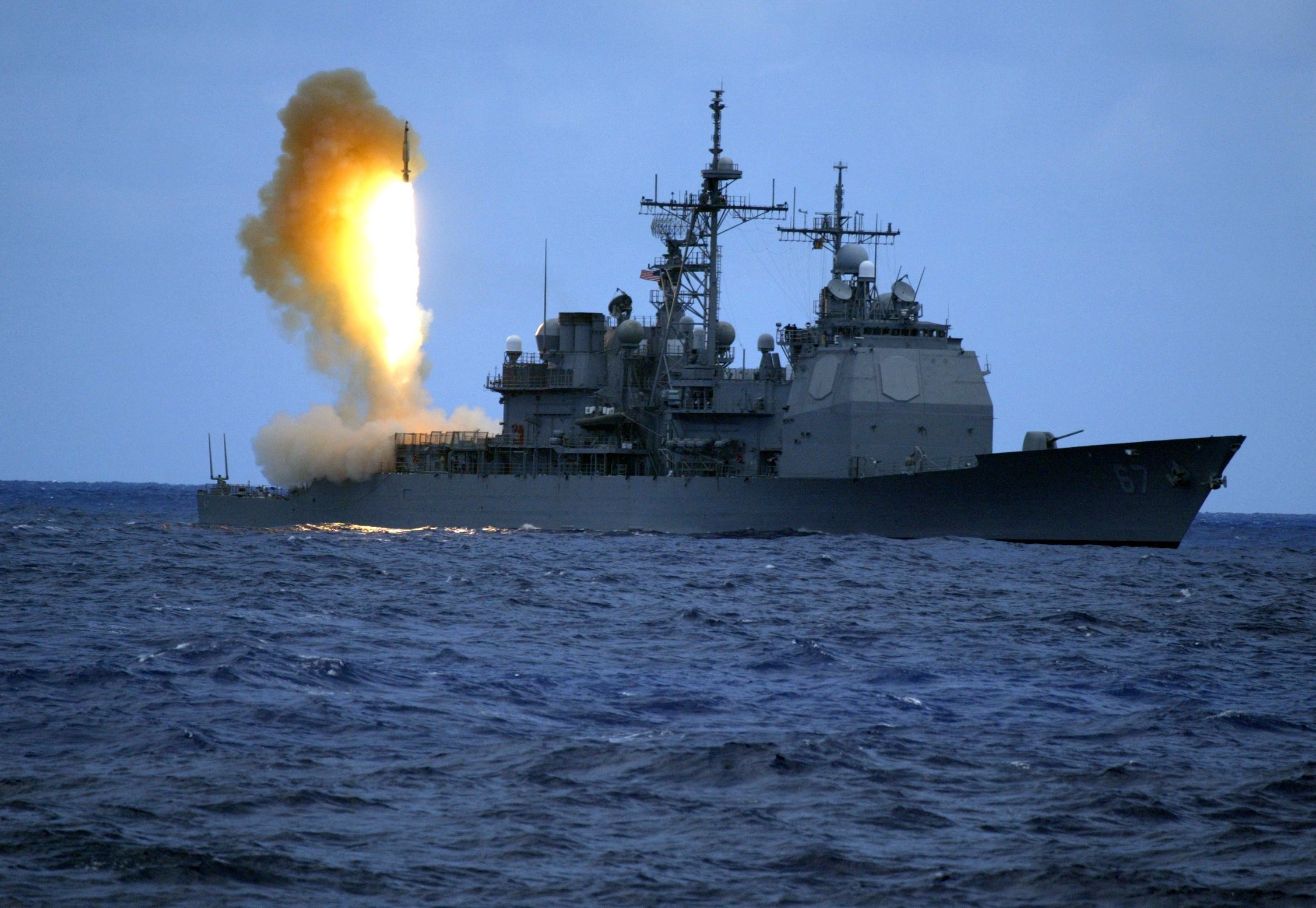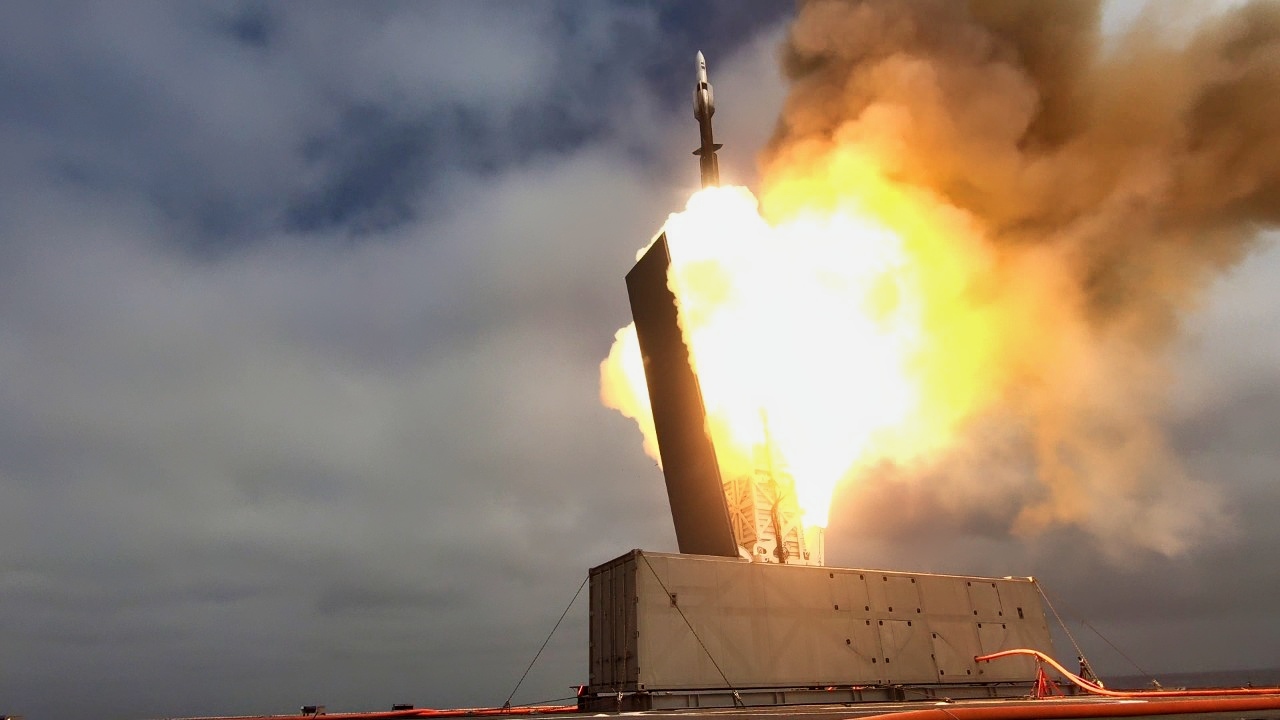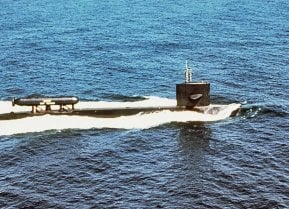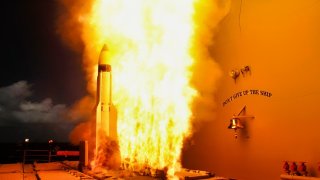TRAM: The U.S. Navy Wants the Ability to Reload Its Missiles at Sea
The U.S. Navy successfully tested the "Transferrable Reload At-sea Method" (TRAM), a hydraulically-powered system allowing warships to reload their vertical launch systems (VLS) while at sea.
What You Need to Know: The U.S. Navy successfully tested the "Transferrable Reload At-sea Method" (TRAM), a hydraulically-powered system allowing warships to reload their vertical launch systems (VLS) while at sea.

-Demonstrated aboard the USS Chosin (CG-65), TRAM could be a "game-changing" capability in keeping vessels operational in combat zones without needing to return to port.
-It allows rearmament of MK 41 VLS cells during underway replenishment. This innovation is seen as crucial for future conflicts, especially against near-peer adversaries like China, where ships may be far from friendly bases. TRAM is expected to enhance the Navy's operational effectiveness.
The U.S. Navy Testing How to 'Lock and Load' At Sea
If the United States Navy were to find itself in a war with China (or other distant near-peer adversary) one of the biggest hurdles it would face would be keeping its warship supplied far from friendly ports and bases. It isn't just the issue of transporting ordnance to the vessels, but reloading the increasingly complex weapon platforms – notably its vertical launch systems (VLS).
Just last week, the U.S. Navy explored how it could address that issue, and completed a successful demonstration of the "Transferrable Reload At-sea Method" (TRAM). U.S. Navy sailors aboard the Ticonderoga-class cruiser USS Chosin (CG-65) employed a hydraulically-powered TRAM device "to load an empty missile canister into the ship's MK 41" VLS while the vessel was in the open ocean, the service announced.
The demonstration served as a proof-of-concept for what has been described as a "top priority outlined by Secretary of the Navy Carlos Del Toro."
Del Toro, who was on hand to see the transfer in person, declared the TRAM to be a "game-changing" capability.
"What a powerful deterrent it will be to our competitors,” said Del Toro. "This demonstration marks a key milestone on the path to perfecting this capability and fielding it for sustained operations at sea."
During last week's test, USS Chosin connected to the Lewis and Clark-class dry cargo ship USNS Washington Chambers (T-AKE 11) off the coast of San Diego. The Military Sealift Command vessel then transferred the missile canister via cables, much like it was any other cargo. Sailors on the Ticonderoga-class cruiser then employed the TRAM to rearm the VLS.
"This was an outstanding effort by the sailors and civilians involved in demonstrating this game-changing capability for the Navy," added Capt. James 'Mike' Williams, commanding officer of USS Chosin.
The at sea-test followed a land-based demonstration that was conducted at the Naval Surface Warfare Center, Port Hueneme Division (NSWC PHD) in California this past July.
Recent Conflict Highlighted the Need for TRAM
The deployment of U.S. warships – notably the guided-missile destroyers – to the Middle East to help protect commercial shipping from Iran-back Houthi missile strikes against commercial shipping has signaled how quickly U.S. warships can expend the needed ordnance.
Instead of returning to friendly naval bases, the vessels could be replenished and even reloaded at sea. TRAM was developed at NSWC PHD to rearm the U.S. Navy's surface combatants "during the underway replenishment (UNREP) process," which is "when a supply ship connects to a combatant at sea to transfer vital material such as fuel and food."
The program has been focused on the MK 41 VLS, which is employed on the U.S. Navy's current fleet of destroyers and cruisers, but will also be used with the future Constellation-class frigates. It "provides rapid-fire missile launch capability," the sea service added.
Reloading the VLS isn't exactly high-tech, and instead employs a time-tested cable and pulley system, but the point remains that it allows sailors at sea to do what normally required a trip back to port. Moreover, it is a time-consuming process. According to NavalNews.com, reloading each missile cell of the MK41 VLS can take upwards of half an hour. Now consider that the U.S. Navy's Arleigh Burke-class guided-missile destroyers have as many as 96 missile cells, and it is easy to see how it would require the ship to stay in port for a minimum of two days!

Even if TRAM can't speed up the process, it is possible the cells can be reloaded as necessary, and possibly while a ship is underway.
"The combatant can stay near the fight to be rearmed, refueled and resupplied all at the same time,” said Rich Hadley, UNREP division manager at NSWC PHD. "As Capt. Arleigh Burke said, 'All time spent in replenishing was time lost in combat.' TRAM improves operational effectiveness by reducing the amount of time the warfighter must spend away from the fight replenishing."
In a showdown with China, which could be fought hundreds and perhaps thousands of miles from a friendly base – or at least one that may not be under threat of attack – TRAM could be the game-changer Del Toro called for in keeping the warships supplied.
"Deploying TRAM into the Military Sealift Command logistics fleet," explained Tim Barnard, director of the NAVSEA technology office (05T).
He added that it "would enable combatants to remain in theater while reloading their VLS missile launchers instead of having to travel long distances to a port, greatly expanding the volume and tempo of long-range firesand the U.S. Navy's advantage over adversaries."
Author Experience and Expertise: Peter Suciu
Peter Suciu is a Michigan-based writer. He has contributed to more than four dozen magazines, newspapers, and websites with over 3,200 published pieces over a twenty-year career in journalism. He regularly writes about military hardware, firearms history, cybersecurity, politics, and international affairs. Peter is also a Contributing Writer for Forbes and Clearance Jobs. You can follow him on Twitter: @PeterSuciu. You can email the author: [email protected].
Image Credit: Creative Commons and/or Shutterstock.


